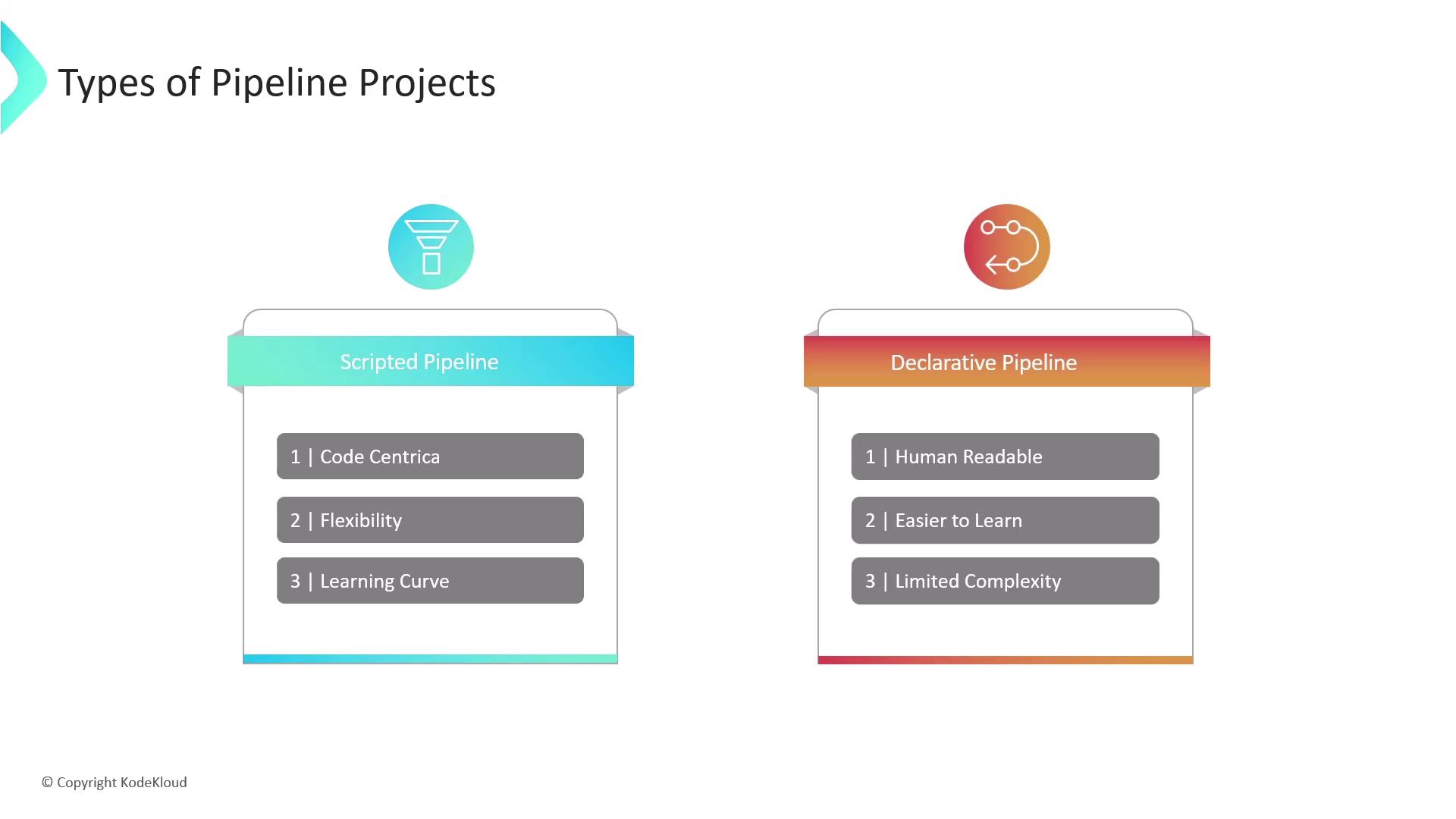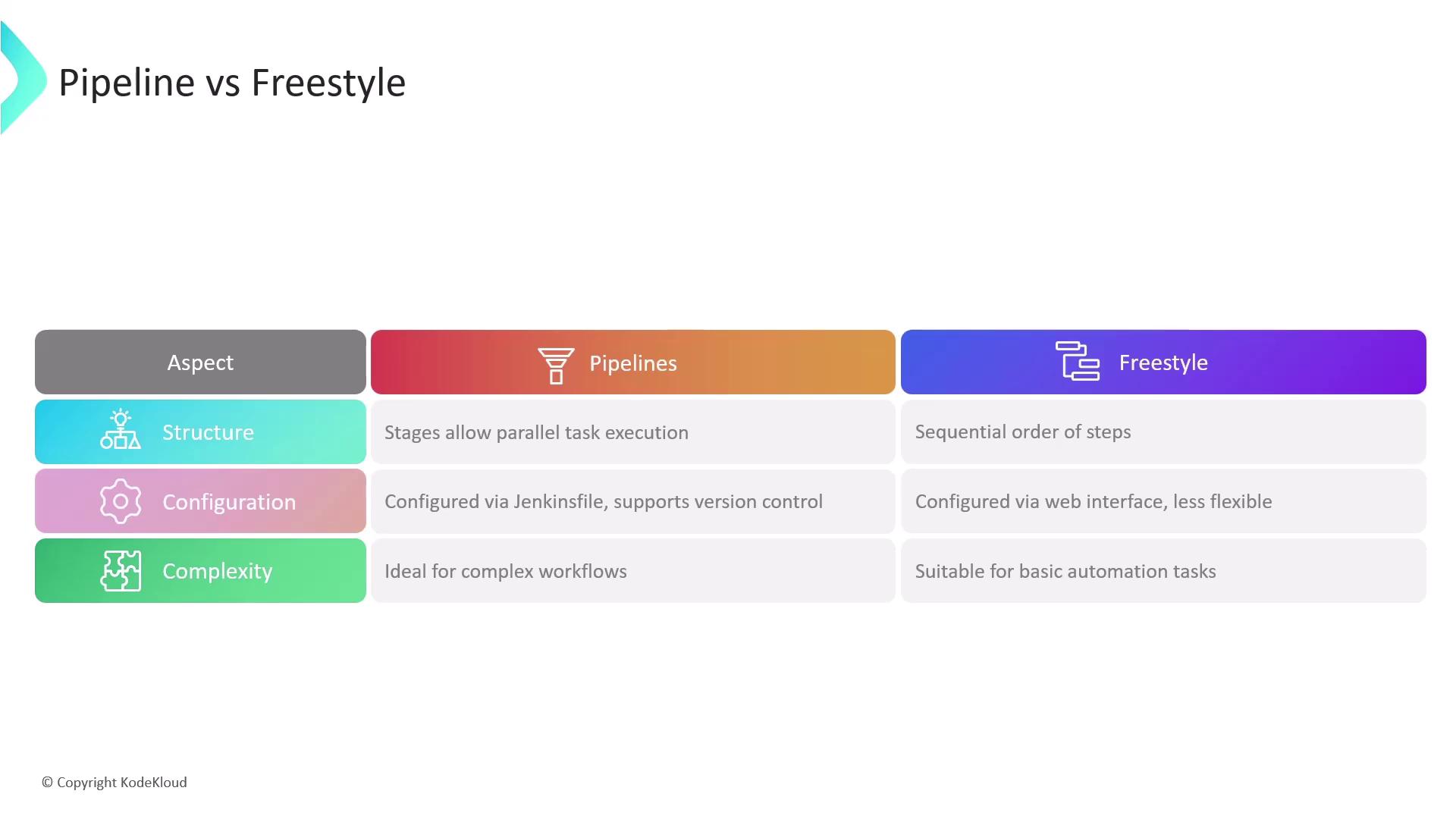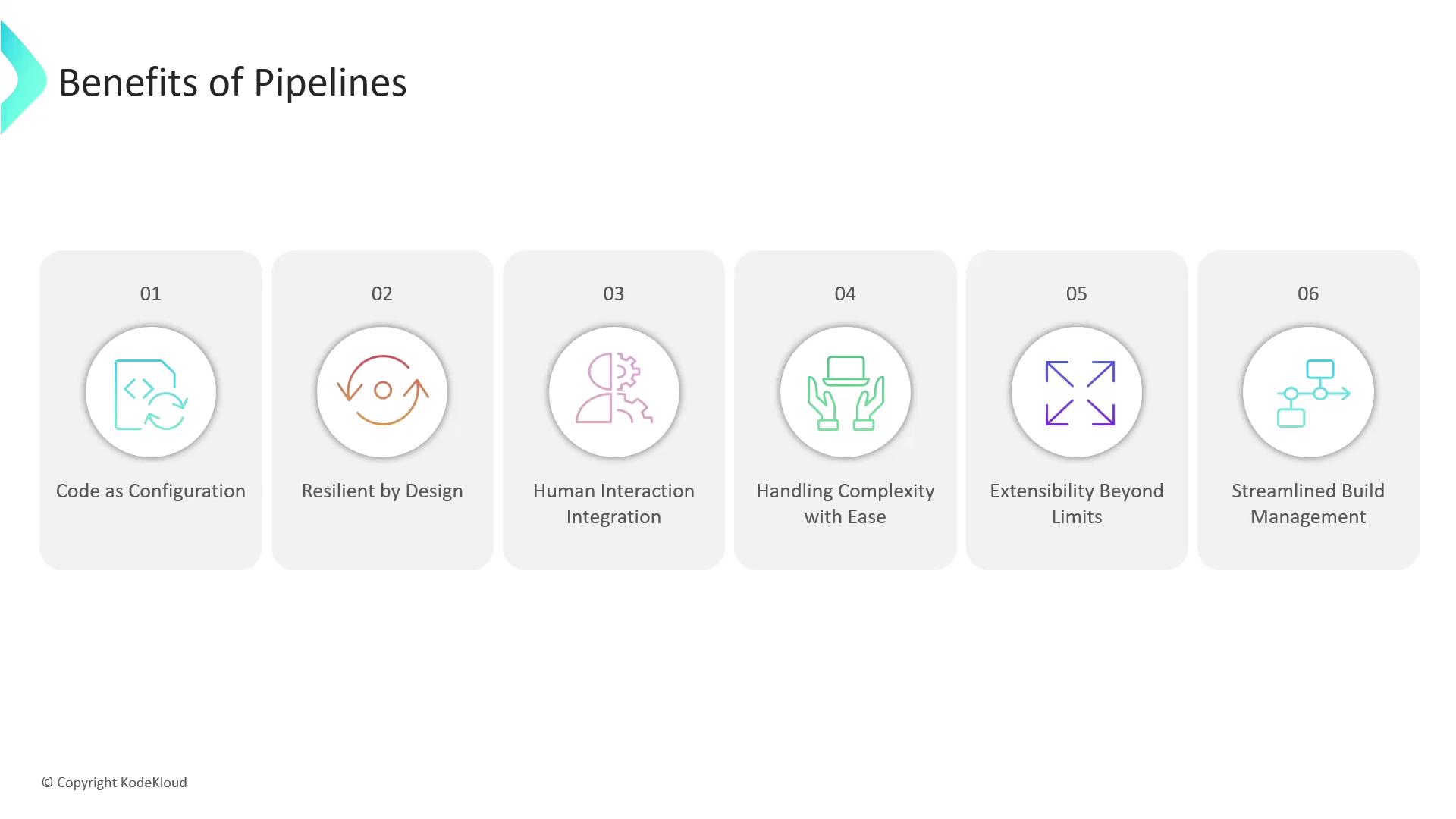Jenkins For Beginners
Jenkins Pipelines
Pipeline and Jenkinsfile
In this guide, we explore the Jenkins Pipeline project and the Jenkinsfile—a script that automates sophisticated Continuous Integration (CI) and Continuous Deployment (CD) workflows. By using pipelines, you can design a detailed recipe for building and deploying your software, taking full control over every stage of the process.
Overview
Jenkins Pipelines simplify your build process by breaking it down into logical stages such as Building, Unit Testing, Linting, Dockerizing, Security, Deployment, and Tests. Each stage groups related tasks together. For example, the "Dockerizing" stage may involve building a Docker image and pushing it to a container registry, while parallel execution of stages like linting and unit testing can reduce overall build time.

Pipelines are defined using a Jenkinsfile, which is typically written in a Groovy-like domain-specific language. This script-based approach replaces traditional point-and-click configurations with a code-centric solution that supports complex logic and automation.
Example Jenkinsfile
Below is an example Jenkinsfile that outlines four primary stages: Build, Unit Test, Dockerize, and Deploy.
pipeline {
agent any
stages {
stage('Build') {
steps {
sh 'mvn build'
}
}
stage('Unit Test') {
steps {
sh 'mvn test'
}
}
stage('Dockerize') {
steps {
sh 'docker build -t imageName:version .'
sh 'docker push imageName:version'
}
}
stage('Deploy') {
steps {
sh 'kubectl apply -f deployment.yaml'
}
}
}
}
Note
This Jenkinsfile demonstrates a clear separation of concerns by organizing tasks into distinct stages, improving both readability and maintainability.
Declarative vs. Scripted Pipelines
Jenkins offers two primary types of pipelines:
- Declarative Pipeline: Uses a simplified and human-readable syntax that is easy to learn—ideal for straightforward and well-defined workflows.
- Scripted Pipeline: Allows for full Groovy scripting, providing greater control and flexibility for complex logic, although it has a steeper learning curve.
To illustrate these differences, consider the following diagram:

The choice between these pipeline styles depends largely on your project requirements and familiarity with Groovy scripting.
Comparing Pipeline Projects and Freestyle Projects
Earlier, Jenkins Freestyle Projects were the standard method for configuring build processes. However, they come with limitations such as rigid sequential steps and a dependence on a web-based configuration. In contrast, Pipeline projects provide a range of benefits:
| Benefit | Pipeline Projects | Freestyle Projects |
|---|---|---|
| Execution Flow | Logical stages with parallel task execution | Rigid sequential processing |
| Configuration | Defined via code in the Jenkinsfile (version-controlled) | Configured through the web interface |
| Resilience | Can survive unexpected controller restarts | Less resilient in dynamic environments |
| Flexibility | Supports pausing for manual intervention/approvals | Limited in handling complex workflows |

Tip
Storing the pipeline configuration in the Jenkinsfile alongside your project code not only promotes version control but also facilitates collaborative editing and transparent build management.
Benefits of Using Jenkins Pipelines
Jenkins pipelines enable a more streamlined CI/CD process with key advantages such as:
- Code-as-configuration for easy version control and sharing.
- Resilience with features like pause and resume.
- Efficient handling of complex build processes with minimal job maintenance.
- Seamless integration with numerous Jenkins plugins that extend pipeline capabilities.

Conclusion
Jenkins pipelines transform how you manage CI/CD workflows by offering a flexible, resilient, and efficient approach to automation. Whether you choose a declarative or scripted pipeline, this method of configuration vastly improves the maintenance and scalability of your build processes.
Thank you for reading this guide on Jenkins Pipelines and the Jenkinsfile. We hope it provides a solid introduction to help you optimize your CI/CD strategy.
Watch Video
Watch video content